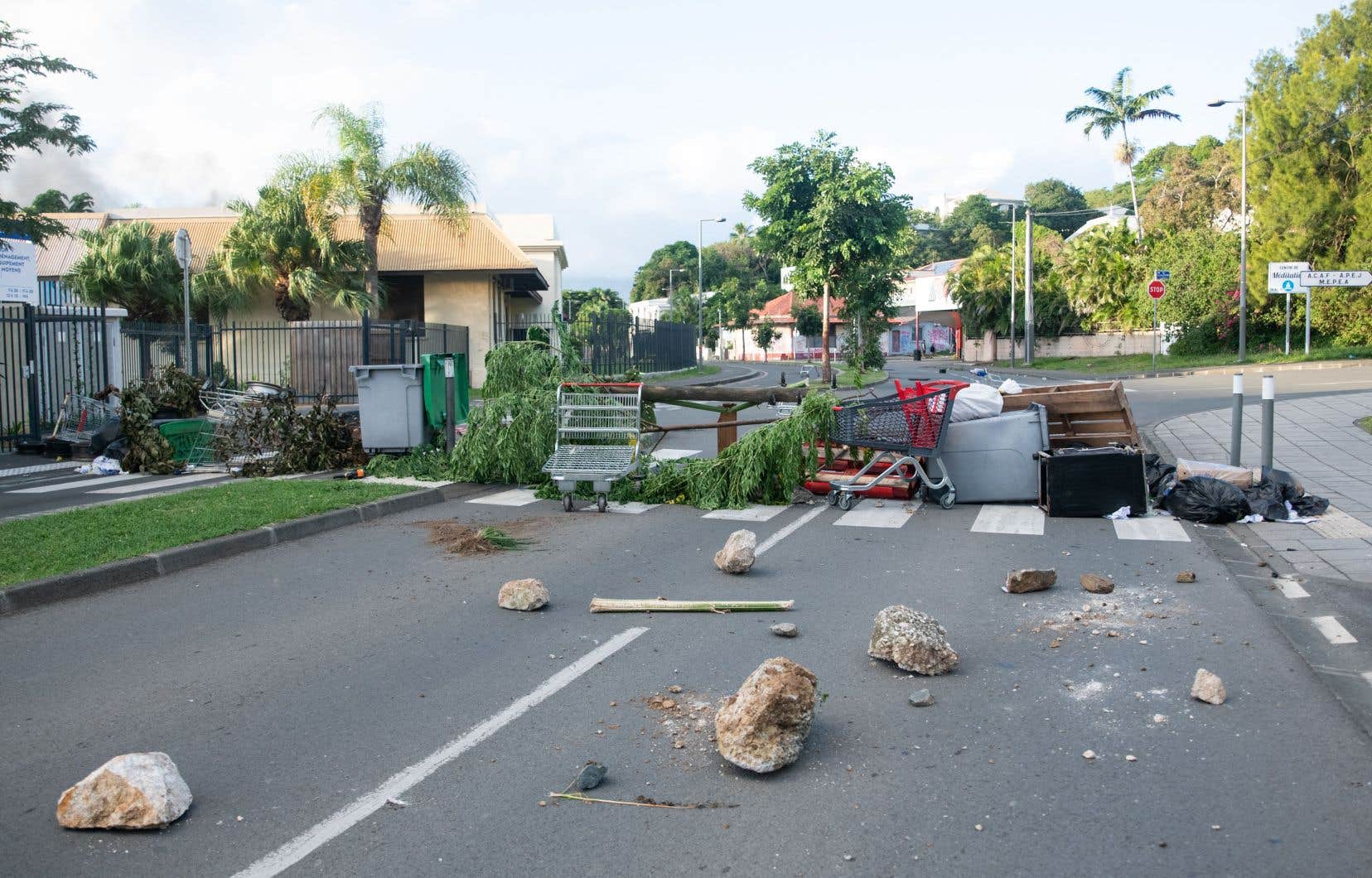Like every evening since the first violence on Monday in New Caledonia, piles of scrap metal, branches and other sheets of metal are placed in the middle of the roadway as barricades in Nouméa, the main city of this French archipelago in the Pacific.
The scene is reproduced identically in all the residential districts of the New Caledonian capital, which have been grappling for three days with riots which left five dead and revived the memory of the independence uprising of the 1980s.
These barricades are erected by groups of residents of European neighborhoods who present themselves as “neighborhood committees” or “vigilant neighbors” and control access to their neighborhood or their street.
Some are content with a quick glance at the driver who wishes to pass, others inspect the passenger compartments in detail by shining the light of their mobile phone. In some places, they even completely ban traffic.
An obstruction of freedom of movement which is coupled with an objective violation of the curfew.
On the roadblocks, firearms are discreet, but present. The arsenal ranges from sticks and iron bars to semi-automatic weapons, including rubber bullet pistols and hunting weapons of all calibers, noted an AFP journalist.
Those manning the barricades and checkpoints believe they “have no choice”. “We have to defend ourselves,” says Annie, in her forties, who did not wish to reveal her last name. “We’re not going to let ourselves be robbed, pillaged or whatever…”
On this roadblock in the Orphelinat Bay district, Sophie assures that “the police are aware, they came to see us”.
The forty-year-old is not armed but, if necessary, she will take “a stone, anything, to defend herself”. “But only if I am attacked,” she adds, “I am not there to fight.”
“Counter-dam”
On Thursday, the state representative in the French archipelago in the South Pacific, Louis Le Franc, recalled that the curfew was imposed on “everyone”, even for these improvised civil defense groups.
Without success, according to the number of people mobilized that same evening.
“The police told us that they were overwhelmed, that they could not be everywhere and that it was good that we were securing our neighborhood,” argues a man requesting anonymity on a “counterblock” in the neighborhood of Tuband.
However, in addition to the two deceased gendarmes, three people, young Kanaks aged 17 to 32, were killed during clashes. And not by the police, stressed Mr. Le Franc.
Nouméa is buzzing with rumors about militias who, as in the 1980s, would set out to hunt the Kanaks. These noises caused panic in the indigenous community of this archipelago colonized by France in the 19th century.e century.
In Vallée-du-Tir, a working-class neighborhood at the forefront of clashes between police and rioters, Gabriel, wearing a black t-shirt and Afro haircut, set up a checkpoint with other young people kanaks.
Branches, fence and rock did the trick. Sitting in a supermarket shopping cart, the young black man says he took this initiative “to protect old people and mothers from the militias”.
He and his comrades are convinced that they are in danger because of the color of their skin. “It’s sure, it overflowed, but that’s no reason to attack us,” he says.
However, fear does not prevent discussion and mutual assistance. Marc, a European living in Vanuatu, has temporarily settled in an apartment very close to the dam, with his pregnant wife.
“Her due date is in three days, we came to Nouméa so that she can give birth in a good, quiet hospital… It’s a failure,” he smiles, half worried, half amused.
The young people from the dam have agreed to accompany them to the clinic on the big day to make sure they arrive safely.
